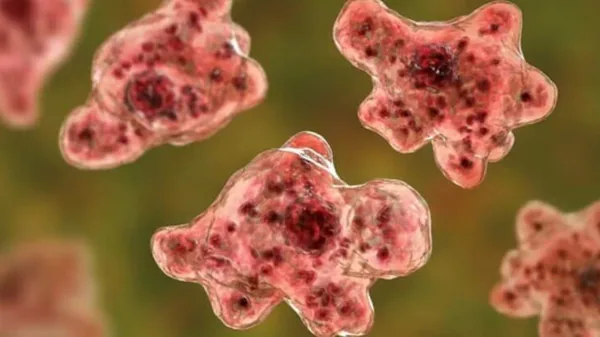
Deadly Brain-Eating Amoeba Claims 20 Lives In Kerala Centre Steps Up Surveillance
NEW DELHI: The central government has asked Kerala authorities to step up monitoring after the state reported a surge in cases of a rare brain-eating amoeba . According to Kerala health minister Veena George, the state has recorded 80 cases and 21 deaths so far in 2025.
The first case of the amoeba (Naegleria fowleri) in Kerala was reported in 2016, but the state has seen a sharp rise in infections in recent years. After two fatal cases in 2023, Kerala reported 36 cases with nine deaths in 2024-culminating in this year's record surge.
Also Read | Softer, gluten-free millets could soon rival wheat in rotis, pasta, and breaAt a meeting with state health officials last week, the Centre emphasized the need for heightened surveillance and wider testing of samples, two officials familiar with the matter said.
The disease, called primary amoebic meningoencephalitis (PAM), is caused by Naegleria fowleri, a microscopic amoeba that enters the body through the nose-often during diving or jumping into stagnant water-before attacking brain tissue. It is almost always fatal.
As part of its advisory, the government has urged the public to avoid diving or jumping into stagnant freshwater such as ponds and lakes, where the amoeba thrives in warm, still conditions.
Also Read | A milestone for transgender rights: Central govt expands healthcare coveragDr. Rajiv Bhal, secretary of the Department of Health Research, chaired the meeting with state authorities, one of the officials cited above said. Experts from the National Centre for Disease Control (NCDC), NIV Pune, PGI Chandigarh, and senior health ministry officials attended.
“The immediate priority is to increase monitoring and ensure all samples are sent to these labs for testing including NIV Pune and PGI Chandigarh. The Integrated Disease Surveillance Programme (IDSP) is actively tracking the situation," the official said.
Public health alertDespite the relatively small number of cases, the high mortality rate makes PAM a pressing public health concern. Experts are investigating why the amoeba is surfacing in Kerala, and their findings could guide future prevention nationwide.
Globally, the US Centers for Disease Control and Prevention (CDC) reports a near 100% fatality rate for PAM. India's case fatality rate, at around 25%, is markedly lower, thanks to improved detection and rapid response systems, the other official said.
Queries sent to the health ministry remained unanswered till press time. The Kerala government also did not respond to queries.
Also Read | Seeking mental health advice from AI? Treat it only as psychological first ai"The government knows the root cause of the infection. But the amoeba can be found in any freshwater body. This is a public health concern that other states should also be mindful of, and adopt a similar proactive approach to contain any potential spread," said the second official.
Health authorities are now focusing on prevention and early detection.“The government has also sensitized both private and government health facilities to maintain a high 'index of suspicion.' The moment a patient with suspicious symptoms comes to them, the immediate response should be to report and investigate the case," this official said. The aim is to detect every case, even if these are rare events.
Dr. Rajeev Jayadevan, public health expert and former president of the IMA Cochin chapter, noted that most cases of encephalitis are bacterial or viral, while amoeba, fungi and parasites account for a small fraction. In India, the cause often remains unidentified.
“Hundreds of types of free-living amoeba live naturally in water and soil, of which only a handful cause human brain infection. Infection occurs when these amoeba enter the brain through the nose. Once there, they multiply rapidly, feeding on brain tissue. Mortality exceeds 95% if untreated," Jayadevan said.
He added that Kerala's recent practice of testing spinal fluid for amoebae has predictably increased detections. Early treatment has reduced mortality to around 30%. Since amoebae can temporarily shift to a hardy cyst form, they cannot be completely eliminated. The best protection is simple: avoid pushing water into the nose and maintain swimming pools properly.
Legal Disclaimer:
MENAFN provides the
information “as is” without warranty of any kind. We do not accept
any responsibility or liability for the accuracy, content, images,
videos, licenses, completeness, legality, or reliability of the information
contained in this article. If you have any complaints or copyright
issues related to this article, kindly contact the provider above.
Most popular stories
Market Research
- Thinkmarkets Adds Synthetic Indices To Its Product Offering
- Ethereum Startup Agoralend Opens Fresh Fundraise After Oversubscribed $300,000 Round.
- KOR Closes Series B Funding To Accelerate Global Growth
- Wise Wolves Corporation Launches Unified Brand To Power The Next Era Of Cross-Border Finance
- Lombard And Story Partner To Revolutionize Creator Economy Via Bitcoin-Backed Infrastructure
- FBS AI Assistant Helps Traders Skip Market Noise And Focus On Strategy




















Comments
No comment